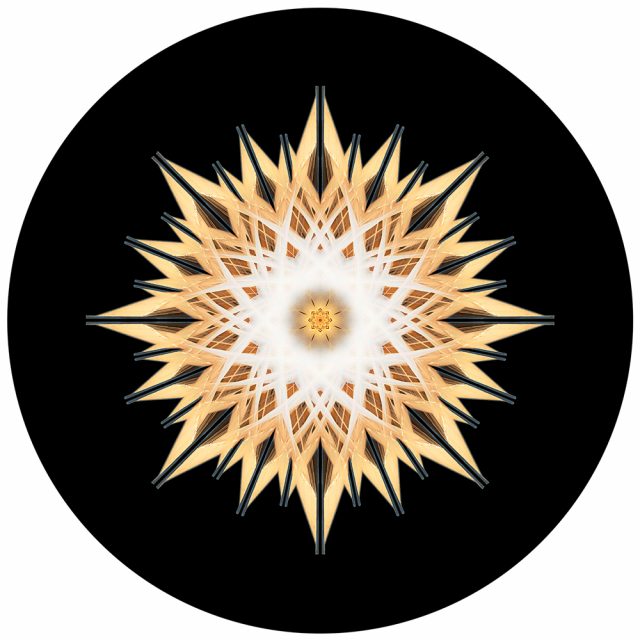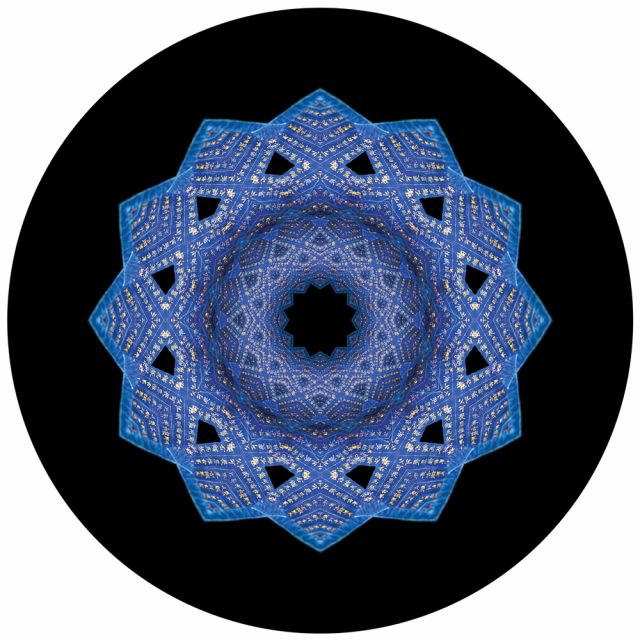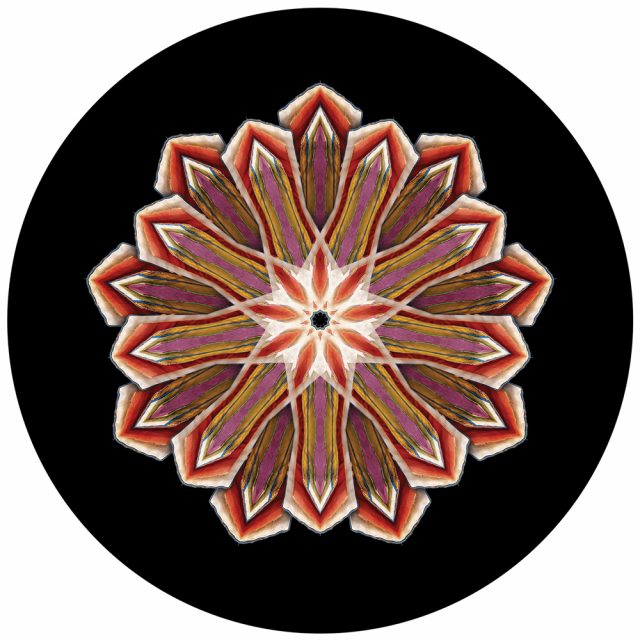Angelenos have a well-kept secret.
A 20-minute drive from LA’s Hollywood Hills, tucked away on a quiet corner in Los Feliz, is the Philosophical Research Society (PRS), a nonprofit educational institution that houses an impressive collection of books and artifacts. Ever since its doors first opened in the 1930s, history junkies and truthseekers from all faiths have made their way there to leaf through rare works from some of the world’s finest thinkers and far-out mystics.
For the last two years, the PRS Library has been a second home to artist-in-residence David Orr. An LA-based visual artist, Orr spent countless hours photographing one-of-a-kind religious and philosophical texts from the center’s archives. He then digitally recombined the results to create his latest exhibition, Illumined, an abstract series of mandalas on display at the library’s new art gallery through September 16, 2018.
Related: Himalayan Buddhist Art: Mandalas 101
Orr’s kaleidoscopic images—which refract words from sages such as Pythagoras, Plato, the Buddha, Confucius, Aristotle, Jesus, and Muhammad—explore the wide-ranging “belief systems we build to make sense of the world,” Orr told Tricycle. Dye-infused onto 30-inch black aluminum discs, pages of timeless wisdom are transformed into mind-bending shapes.

Part of what spurred this particular project, and what drew Orr to Thich Nhat Hanh’s Order of Interbeing ten years ago, was the Buddhist tradition’s emphasis on finding your own path through radical inquiry, a theme that runs through Orr’s art and practice. Back in the 2000s, his hunger for higher truth led him to study the teachings of eminent Zen masters. But reading paperback translations of sutras didn’t satisfy. He wanted to see the originals.

As the artist began working hands-on with Theravada and Mahayana scriptures at PRS (with support from an “understandably apprehensive” library staff), he was struck by their diversity. Handwritten Japanese manuscripts were bound with indigo dyed paper and gold ink, while others, like the 18th-century copies of the Diamond Sutra and Heart Sutra from Tibet, were buttressed with wooden panels and wrapped in silk cut from priests’ robes.
Related: The Buddhist History of Moveable Type
Bringing these distinct physical qualities to the foreground was a starting point, explains Orr, whose next step was multiplying the photograph of the text by a number symbolically associated with each tradition. Once these factors clicked into place, Orr felt he had constructed a compelling visual, “a whole greater than the sum of its parts” that would bring viewers into a space of contemplation and wonder.

Figuring out ways to handle the sacred texts without damaging them was an ongoing head-scratcher for Orr. “I had to be extremely careful,” he said. “I didn’t want to be the guy who cracked a thousand-year-old sutra.
“When you are representing an entire worldview with a single image,” he continued, “you may not agree with it, but you have to treat it with the respect it deserves.”